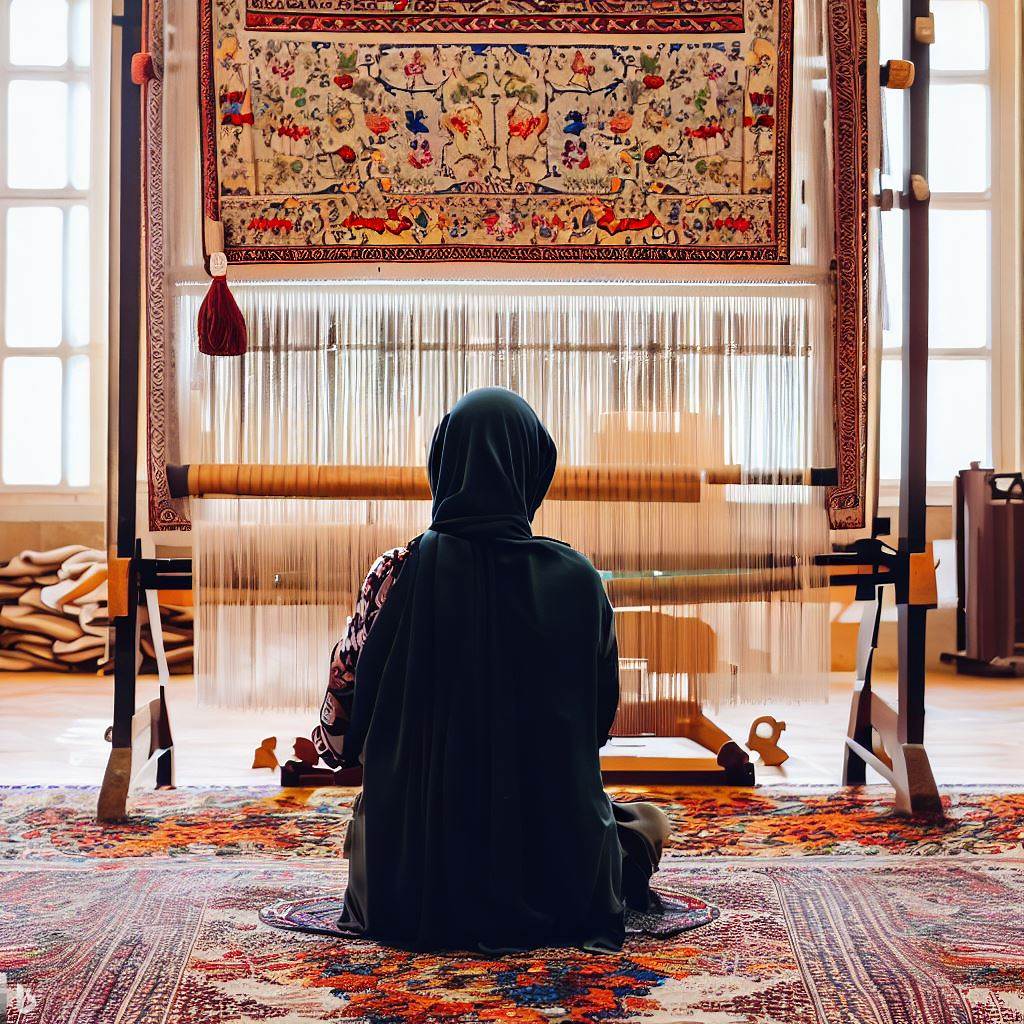Rug Weaving Preservation: Caring for Antique and Vintage Rugs
Researching A Rug’s History and Origins
Understanding the provenance and background of an inherited or found antique rug provides insights into appropriate preservation. Their history informs care.
Look for identifying marks, motifs, materials, dyes, and construction that denote origins. Consulting guides helps decode hallmarks linking rugs to certain eras and regions.
Research the culture of origin to better understand initial purpose and significance. Studying period tools and methods illuminates processes behind details. Origins guide choices.
Respectful research empowers appreciating heritage rugs as more than decorative objects. Their time and place of creation direct how to protect their legacy.
Gently Surface Cleaning Rugs by Hand
Regular gentle cleaning keeps antique rugs looking their vibrant best by removing abrasive surface dust and soils. Frequent light care prevents damage.
Use soft brushes to lightly whisk away dried mud or particles. Avoid commercial vacuums which can snag or pull delicate fibers. Damp towels blot up minor stains.
Work gently in the pile’s direction to avoid catching knots. Take extra precaution around fragile fringe or embroidery. Flip periodically to evenly distribute wear. Manage expectations with very worn pieces.
With a soft touch, routine surface cleansing helps antique textiles retain their beauty and appeal. Patient hands prolong their lifespan.
Disinfecting Rugs Through Low Impact Methods
Sanitizing antique rug fibers requires gentle conscientious methods to avoid bleaches or harsh processes that degrade integrity. Health and care balance.
Mild plant-based soap solutions lift away bacteria and allergens without stripping wool’s protective lanolin oils. Thorough rinsing prevents residue buildup. Air circulation speeds drying.
For deeper cleaning, specialists use controlled humidity and specialized gases like argon to permeate and neutralize microbes. UV light provides sanitation without moisture.
When disinfecting becomes necessary, the most conservative approach possible preserves materials. Safer updated alternatives replace damaging old chemical routes.
Repairing Areas of Significant Damage and Loss
Rugs showing substantial wear deserve restoration stitching and patches to honor their remaining wholeness. Sensitive mending returns viability.
Reweaving small bare sections matching original textures and patterns maintains strength and appearance. Hand sewing edge bindings and fringe stabilizes unraveling. Color-matched embroidery minimizes stains.
Patches may feature recognizable decorative motifs but avoid attempting illusion of perfection. Some culture’s aesthetics celebrate visible repair. Bold motives could commemorate the renewal.
With fine threads and respect for imperfections, repairs prolong treasured rugs’ usefulness while adding new layers of meaning. The story continues enriched not obscured.
Storing Rugs Properly to Avoid Light and Pest Damage
Safe storage is essential for shielding fragile antique rugs from light exposure, pests, and physical strain. Ideal conditions preserve materials.
Roll rugs pile side out on acid-free tubes to minimize folding creases. Breathable dust covers allow air circulation. Shelve flat in dim, climate-controlled rooms avoiding humidity extremes.
Inspect regularly for any emerging moth larvae, beetles, or rodents seeking to nest in wool and cotton. Place herb sachets as natural deterrents. Limiting oxygen through sealing also thwarts insects.
Proper home storage simulates professional museum environments. When not on display, safe containment protects textile investments until their next careful airing.
Mounting Flatwoven Rugs as Artwork
Fragile flatwoven rugs like antique kilims withstand handling well when mounted securely as art hung out of reach. Elevation spares wear.
Fabric-covered stretcher bars that clip rug edges provide cushioned support. Acid-free backing fabric keeps airborne particles from embedded fibers. Velcro attachments ease removal.
Minimally visible hardware and muted frames keep focus on the central rug. Embedded hanging systems on the back distribute weight evenly across the width. Rotating periodically balances light exposure.
Mounting preserves delicate heirloom weavings for perpetuity while allowing them to enrich spaces through timeless beauty worthy of fine art. Their legacy survives on walls.
Collaborating With Specialists for Major Conservation
For rugs needing significant intervention, trusted specialists should provide major restoration guided by traditional principles and ethics. Their expertise restores hope.
Experienced conservators mend foundation tears, rewarp strained edges, and patch missing sections with meticulous accuracy. They remove tenacious stains through tested chemistry and handwork.
Technical analysis like spectrometry identifies dyes and fibers requiring custom treatment. Efforts document each step of bringing rugs back from the brink. Absolute care and transparency guide the process.
Thanks to collaborative restoration, future generations may continue appreciating and learning from rare survivor textiles. Their handwork grants damaged rugs new life and purpose.
Donating Heirlooms to Preservation Institutions
Sometimes bequeathing precious antique rugs to museums or universities is the best way to ensure their care and availability for study into perpetuity. Public sharing provides meaning.
Reputable institutions with dedicated textile conservation wings guarantee specialized archival conditions and handling protocols. DIGitized catalogs give global access to designs. Scholars help decode origins.
Seeing one’s family rugs inspire young weavers through exhibitions is deeply fulfilling. Collection gaps get filled expanding cultural knowledge. Textiles find purpose when contributing to shared legacy.
By selflessly placing heirlooms within the public trust, donors participate in the continuing tapestry of rug weaving heritage. Their gifts aid future understanding and innovation.
The comforting textures of antique rugs link present days to past hands that touched and repaired the same fabrics decades or centuries ago. Preserving these timeworn threads honors cross-generational bonds that shape identity and family tradition. With patience, research, and care, the living legacy endures woven by those determined to carry gifts from the past safely into the future.
